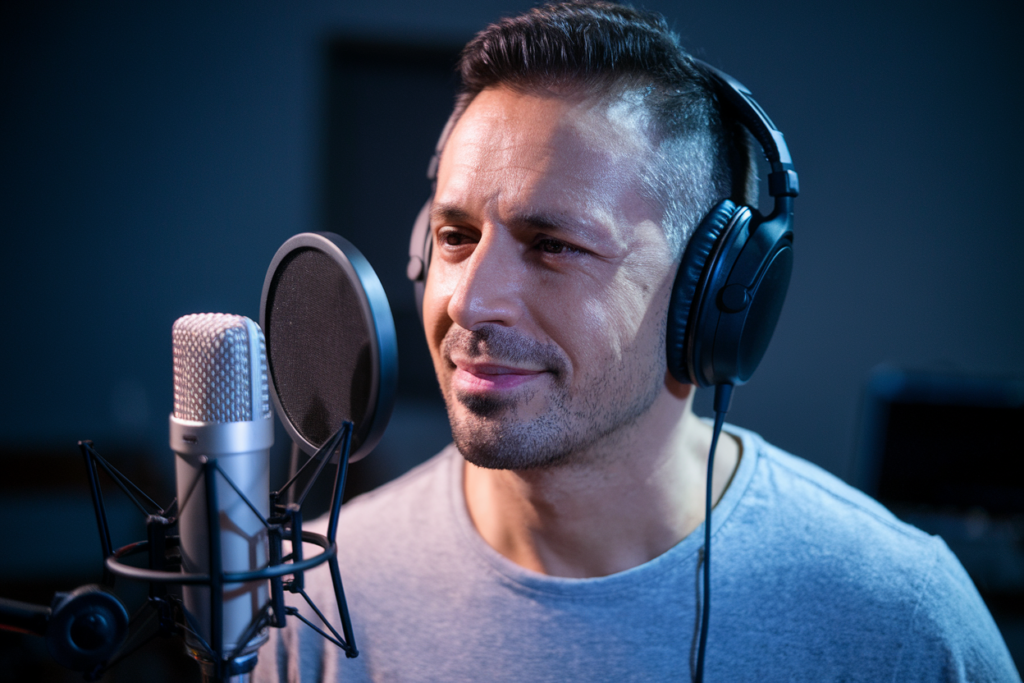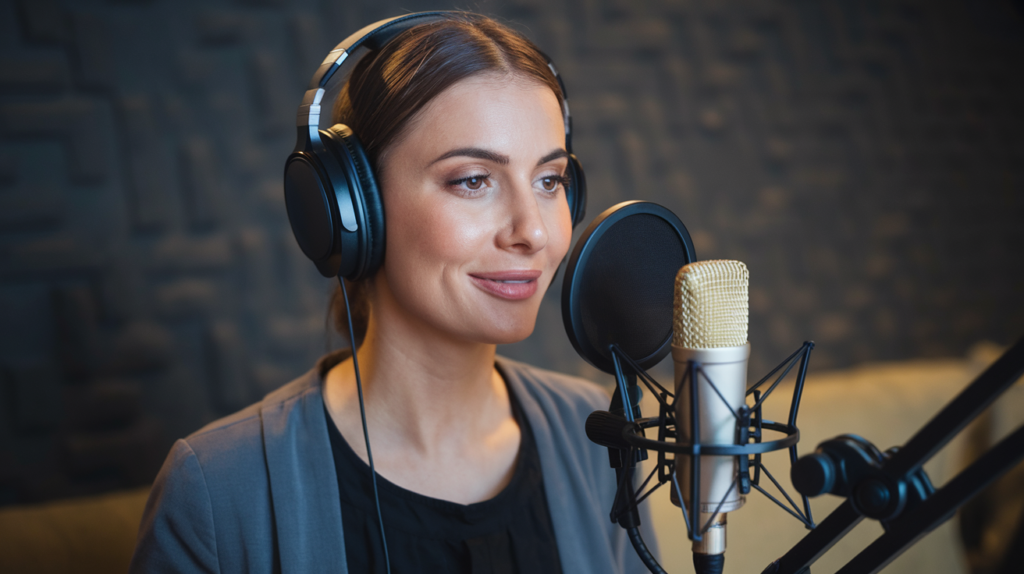Key Takeaways
- Understanding Translation Complexity: Translating video scripts into Turkish requires capturing the essence of the original content, not just literal word-for-word translations.
- Cultural Nuances Matter: Awareness of cultural differences and local idiomatic expressions is crucial to ensure that messages resonate well with a Turkish-speaking audience.
- Importance of Accurate Translation: Precision in translation helps preserve emotional tone and intent, enhancing viewer understanding and connection to the material.
- Utilizing Professional Resources: Engaging experienced translators familiar with both languages can significantly improve translation quality, especially for voiceover scripts.
- Thorough Proofreading Required: Editing for grammatical accuracy and flow is essential; practicing with voice actors can help identify areas needing adjustment before final production.
- Focus on Audience Engagement: Adapting content thoughtfully for Turkish audiences ensures it feels tailored rather than merely translated, leading to better viewer engagement.
Ever wondered how to translate video scripts into Turkish without losing their essence? You’re not alone. Many creators face the challenge of making sure their content resonates with a new audience while maintaining the original message.
Understanding Video Script Translation
Translating video scripts into Turkish involves more than just converting words; it requires capturing the essence of the original content. This process ensures that your message resonates with a Turkish-speaking audience while maintaining clarity and engagement.
Importance of Accurate Translation
Accurate translation is crucial for preserving nuances and cultural references in your content. When you translate a script, you’re not only translating words but also emotions, tone, and intent. A well-translated script enhances viewer understanding and connection to the material. If you aim for professional voiceovers, precision becomes even more essential since voice talents rely on accurate scripts to deliver compelling performances. Misinterpretations can lead to confusion or misrepresentation of your brand.
Common Challenges in Translation
Several challenges arise during video script translation.
- Cultural Differences: Cultural context plays a significant role in how messages are perceived. Some phrases or idioms may not have direct equivalents in Turkish.
- Tone Consistency: Maintaining the original tone while adapting it for a new audience can be tricky. You want voice artists to convey the same emotion as intended.
- Technical Terminology: Specialized vocabulary might require careful consideration to ensure accuracy without losing meaning.
- Length Constraints: Translations often change word count, which affects timing for voiceover recordings.
Navigating these challenges effectively contributes to high-quality translations that engage viewers while respecting linguistic integrity.
Steps to Translate Video Scripts into Turkish
Translating video scripts into Turkish involves a systematic approach. This process ensures the original message remains intact while appealing to a Turkish-speaking audience.
Preparing the Script for Translation
Start by reviewing your script thoroughly. Identify key messages, cultural references, and tone elements that require special attention. Break the script down into manageable sections; this method simplifies translation and helps maintain context. Pay close attention to any idiomatic expressions or phrases unique to your original language—these often don’t translate directly and may need adaptation for clarity in Turkish.
Consider formatting your script with time codes if it’s intended for voiceovers; this will aid translators in syncing translated content with visuals or audio effectively. Ensure you include notes on emotions or delivery styles, especially if you’re working with voiceover talent who’ll need these cues for performance.
Choosing the Right Tools and Resources
Utilizing appropriate tools can significantly enhance the translation process. Look for online translation software designed specifically for video scripts, as they often cater to multimedia formats and provide helpful features like collaboration options.
Seek out bilingual dictionaries or glossaries focused on industry-specific terminology related to your video’s subject matter; this can help ensure accurate translations of technical terms relevant to your content.
Engaging professional translators familiar with both languages’ nuances is crucial. They understand cultural subtleties and can adapt scripts effectively, ensuring the final product resonates well with viewers. When selecting translators, consider their experience in translating scripts intended for voiceovers; those familiar with pacing and tone will deliver results that sound natural when spoken aloud.
Tips for Effective Translation
Effective translation of video scripts into Turkish requires careful attention to context and tone. By focusing on these elements, you ensure the final product resonates with your audience. Here are some key strategies to enhance your translation process.
Maintaining Context and Tone
Maintaining context and tone during translation is vital for viewer engagement. You must understand the original script’s underlying message, emotions, and cultural nuances. This understanding helps preserve the intended impact in Turkish while adapting phrases that resonate with local audiences. For instance, consider how humor or idiomatic expressions may differ between languages; what works in English might not translate directly.
Utilize annotations within your script to highlight emotional cues or specific delivery styles expected from voice actors. These notes guide translators in capturing the essence of each line, ensuring a smooth delivery when recorded by voiceover talent.
Proofreading and Editing Practices
Proofreading and editing play a crucial role in refining translated scripts. Start by reviewing the text for grammatical accuracy and clarity. Look for any awkward phrasing that could disrupt flow during recording sessions with voice artists.
Consider collaborating with native Turkish speakers who can provide insights into cultural relevance and linguistic accuracy. Their feedback ensures that translations maintain authenticity while reflecting local dialects or preferences.
Lastly, test your translations through practice runs with voiceover actors before finalizing them for production. Listening to how the translated script sounds aloud can reveal areas needing adjustment—such as pacing or emphasis—ultimately leading to a polished final product ready for your target audience.
Cultural Considerations in Translation
When translating video scripts into Turkish, understanding cultural nuances becomes essential. You want your content to resonate with the audience while maintaining its original intent and tone.
Understanding Turkish Culture
Turkish culture is rich and diverse, influenced by a blend of Eastern and Western traditions. Familiarity with local customs, values, and societal norms helps you address your audience effectively. For instance, humor can vary significantly; what’s funny in one culture may not translate well into another. Recognizing these subtleties ensures your message doesn’t miss the mark. It’s vital to adapt references or idioms that might confuse viewers unfamiliar with them.
Adapting Content for Turkish Audiences
Adapting content for Turkish audiences involves more than direct translation; it requires thoughtful localization. Think about how specific phrases or concepts will be interpreted in the new context. Local language usage often includes unique expressions that reflect daily life and experiences in Turkey.
Engaging voice actors who understand these cultural intricacies enhances the connection between your content and viewers. A skilled voice actor can bring emotion and authenticity to the script, making it relatable for a Turkish-speaking audience. They’ll know when to emphasize particular words or phrases that carry weight within the cultural framework, ensuring your message resonates deeply.
By prioritizing cultural considerations during translation, you create engaging content that feels tailored for its audience rather than merely translated—leading to improved viewer engagement and comprehension without losing sight of the original message’s integrity.
Conclusion
Translating video scripts into Turkish is a nuanced process that goes beyond mere word-for-word translation. By focusing on cultural relevance and emotional resonance you can create content that truly connects with your audience. Engaging professional translators who understand both languages’ subtleties is key to achieving this balance.
Utilizing the right tools and approaches will streamline your translation efforts while maintaining the integrity of your original message. Remember to include notes for voice actors and conduct practice runs to ensure everything flows naturally. Prioritizing these aspects not only enhances viewer engagement but also fosters a deeper understanding of your content within the Turkish-speaking community. Embrace these strategies and watch your videos reach new heights in audience connection and comprehension.
Frequently Asked Questions
What are the main challenges in translating video scripts into Turkish?
Translating video scripts into Turkish involves tackling cultural differences, maintaining tone consistency, handling technical terminology, and managing length constraints. These challenges are crucial for delivering high-quality translations that capture the essence of the original content while fostering viewer engagement.
Why is accurate translation important for video scripts?
Accurate translation preserves nuances, emotions, tone, and intent from the original script. This ensures that viewers understand and connect with the content effectively, making it essential for engaging a Turkish-speaking audience.
How can creators prepare their scripts for translation?
Creators should review key messages and cultural references in their scripts. Breaking down the script into manageable sections helps maintain context. Additionally, including time codes and notes on emotion or delivery style aids translators during the process.
What tools can assist in translating video scripts?
Utilizing online translation software and bilingual dictionaries can enhance the translation process. These tools help ensure accuracy while capturing cultural nuances in language usage.
Why is collaboration with professional translators recommended?
Professional translators possess expertise in both languages’ nuances, enabling them to adapt scripts effectively. Their familiarity with cultural considerations ensures that translated content resonates well with Turkish audiences.
How should creators maintain context and tone during translation?
Understanding the original script’s underlying message and using annotations to highlight emotional cues is essential. Collaborating with native speakers also helps maintain authenticity and cultural relevance throughout the translation.
What role do practice runs play in finalizing translations?
Conducting practice runs with voiceover actors allows creators to refine pacing and emphasis. This step leads to a polished final product that resonates more deeply with its target audience.
How does understanding Turkish culture impact translations?
Understanding Turkish culture—shaped by Eastern and Western influences—is vital for addressing audience expectations successfully. Thoughtful localization makes humor and idiomatic expressions relatable to viewers, enhancing overall engagement.
What tips can enhance effective translation of video content?
Key tips include maintaining context and tone fidelity, collaborating closely with native speakers for accuracy, proofreading thoroughly, using emotional annotations for voice actors, and conducting rehearsal sessions before final production.







